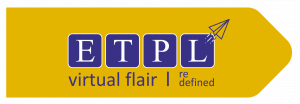These days, technology is a big part of how schools work, especially in this digital age. One of the most significant changes is the use of Learning Management Systems for Schools. These platforms make it easy and complete to keep track of students’ growth, tests, and general learning experiences. In this blog post, we will talk about what learning management systems (LMS) are, what their benefits are, and how they can change the field of education.
Table of Contents.
- What is a Learning Management System?
- Benefits of Using LMS for Schools
- Key Features of Learning Management Systems for Schools
What is a Learning Management System?
A Learning Management System (LMS) is software used to manage, share, and set up teaching materials. It gives teachers a convenient place to plan classes, give students resources, and check on their work simultaneously. LMS platforms have many tools to help students learn effectively, such as discussion rooms, online tests, homework, and the ability to see how well students are doing.
Benefits of Using LMS for Schools
1. Centralized Learning Environment
One of the best things about using learning management systems for schools is that they help create a centralized learning atmosphere. When teachers put all their course materials, lectures, and other tools in one place, it is easier for students to access them from anywhere. This centralized approach makes sure that all students have the same access to learning materials and promotes consistency in how the curriculum is taught.
2. Personalized Learning Experience
A personalized learning experience is possible with LMS platforms because teachers can change tasks and material to fit the needs of each student. Teachers can make customized learning plans, give focused feedback, and give students extra tools to help them understand ideas that are hard to grasp. This tailored method encourages students to learn at their own pace and gets them more involved.
3. Streamlined Assessment Process
It can be difficult for teachers to monitor their students’ tests. However, learning management systems for schools make this process easier by automating grading, tracking student growth, and creating detailed reports. The LMS lets teachers create online tests, projects, and quizzes, which makes it easier to see how well students are doing and determine what they need to work on.
4. Enhanced Collaboration and Communication
LMS platforms come with built-in tools like chat rooms, discussion boards, and message systems that make it easier for students and teachers to work together and talk to each other. These things encourage open communication, learning from each other, and active participation, which makes the setting for working together to learn stronger.
5. Cost-Effective Solution
Educational institutions that use Learning Management Systems for Schools can save a lot of money. LMS platforms make it easier to manage tasks and reduce the need for natural resources. This makes schools run more smoothly and distribute resources more efficiently.
Key Features of Learning Management Systems for Schools
- Course Creation and Management
Learning Management Systems for Schools platforms offer simple tools for managing and creating classes, which teachers can use to create dynamic and interesting courses. Teachers may set learning goals, use multimedia, and break up the course material into units to help students navigate the material.
- Assessment and Grading
With built-in testing tools, school Learning Management Systems for Schools make the grading process more accessible. There are many kinds of tests that teachers can make, like project-based tests, essay tasks, and multiple-choice tests. It saves teachers a lot of time and work because the LMS can score these tests for them.
- Analytics and Reporting
The analytics and analysis tools in learning management systems for schools provide useful details about student performance. Teachers can see how well their lessons are working by making detailed reports, monitoring student growth, and noticing learning trends. With this data-driven method, teachers can make smart decisions and change their teaching to better meet their students’ needs.
- Mobile Accessibility
In the digital age we live in now, flexibility and ease of access are essential. The mobile-friendly platforms that most school learning management systems offer make it possible for teachers and students to access course materials and resources while they are active. This feature ensures that students can learn at any time and from anywhere, meeting their many needs.
eGenius Learning management systems have changed the way schools keep track of student growth and tests. These tools make it possible to provide high-quality education in a centralized, personalized, and effective way in this digital age. Learning Management Software boosts teamwork, accelerates management tasks, and offers students a flexible, engaging learning experience.














